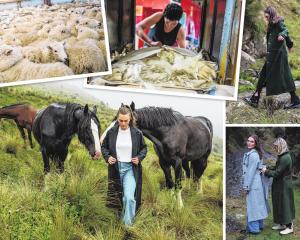
A team from Doc Murihiku spent yesterday seeking this season’s New Zealand sea lion pups at a key Catlins breeding location, in order to log those already tagged, and tag any remaining youngsters.
Team leader and Murihiku senior biodiversity ranger Ros Cole said the Catlins population was still "relatively young" in comparison to the longer-standing Dunedin coastal population.
That meant local people were still learning ways to interact with and live alongside the "boisterous" animals, which could sometimes lead to fear and misunderstanding.
"We’ve had amazing co-operation from many locals, but we still have a job to do to educate people how to share the coastline with these beautiful animals."
Ms Cole’s comments came on the back of three breeding female fatalities in the Catlins caused by humans during recent years, including a stabbing, a shooting and a vehicle accident.

"When you’ve spent some time interacting with them, you quickly realise they’re more inquisitive and playful than anything.
"As long as you keep your distance and don’t engage excitedly or aggressively with them, they’ll lose interest and leave you alone.
"In some ways, they’re not unlike dogs in their behaviour."
She said six pups had been born to the area’s 13 breeding females this summer, of which four had been tagged so far.
"There’s one male and one female remaining to tag and maybe others we haven’t spotted yet.
"The untagged male is about 35kg now, so they’re feeding well and growing fast."
The tagging programme allowed later identification of individuals to establish their origin, and analysis of survival estimates.
"Many females return to their place of birth to pup, so this can allow Doc to work with the immediate locals and increase their understanding.
"This tends to lead to better outcomes for the mothers and pups, as people take ownership of ‘their sea lions’, and builds a network for advocacy, oversight and care."
She said although the nationally vulnerable species was seeing a moderate increase in numbers on the mainland, the overall population, including the Subantarctic Islands, was in decline.
"When people appreciate how lucky we are to have these amazing animals on our doorstep, given how rare they are, it gives a fresh perspective.
"It’s imperative we take whatever steps we need to protect them."












